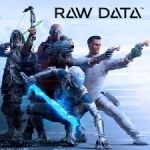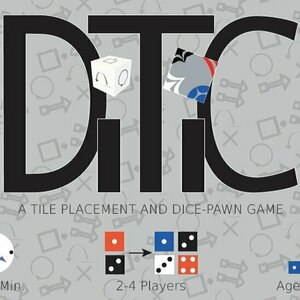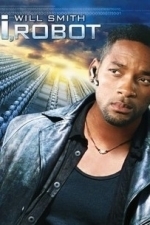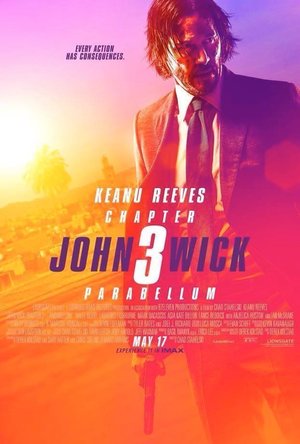Women's Lives: A Psychological Exploration
Claire A. Etaugh and Judith S. Bridges
Book
This cutting-edge and comprehensive fourth edition of Women's Lives: A Psychological Perspective...

Bid Wars: Storage Auctions
Games and Entertainment
App
Bidding on storage auctions is a very good way to make money, if you’re not afraid to test your...

CNBC Business News and Finance
News and Finance
App
Access the power of CNBC on your iPhone, iPad and Apple Watch! Get fast, accurate and actionable...

Thumb Drift - Furious One Touch Car Racing
Games
App
Play the #1 drifting game on the App Store with over 100 unique cars for fast, furious and fun...
Purple Phoenix Games (2266 KP) rated DiTiC in Tabletop Games
Oct 2, 2019
So my original thought was to try to open this preview with a dastardly abstract statement to truly emphasize how theming is irrelevant with some activities. Not quite having done that, DiTiC is an abstract strategy game of “tile placement and dice-pawn” movement. How does it play? Read on.
In DiTiC the winner is the first player to upgrade one of their dice from a smaller-valued die into a value of six. Bring out smaller value dice and move them around the “board” to combine with other dice and win the game!
DISCLAIMER: We were provided a review copy of this game for the purposes of this review. These are preview copy components, and I do not know if the final components will be similar or different, or if the Kickstarter campaign will alter or add anything through stretch goals. -T
To setup a game of DiTiC, each player chooses a color of dice and takes all dice into their hand. The tile with “DiTiC START” on it is the, well, starting tile and is placed in the middle of the table. Roll off to see who goes first and you are ready to play!
On a turn a player may draw and place a tile or move one of their dice. Players start with zero dice on the board, so the first few turns will be drawing a tile from the bag and placing it on the board either side face-up. As you can see from the photos the tiles will have different colored (and shaped) corners. It’s when these corners complete an intersection of four tile corners that dice may enter the board. Depending on the color of the intersection’s majority control a die of said majority color comes into play on the value of the number of icons present. That’s a mouthful. So there are four corners to the intersection. If said intersection contains two red, a blue, and a black icon then red will place a die with value of two pips showing on that intersection. These dice may now be moved and combined with like-valued dice (with an exception). If a player has at least one die on the board when initiating this action, they may roll the action die after placement and complete any other actions the die result allows.
When a player decides instead to move, combine, or overtake a die, they simply move the die along the edge of a tile to the next closest intersection. Exception to movement: players can move all dice with a value of one BEFORE any other dice movement, and dice with value of one or two may move in any direction – even diagonally.
To combine/upgrade dice players will need to move one die into the same intersection as an equal-valued die in order to combine into a die of value +1. Example: a four die and a four die combine to make a five die. Exception to combinations: a value one die may combine with a value three die (remember the exception from the previous paragraph?) to create a value four die.
To overtake an opponent’s die, a player simply moves a superior die onto an occupied intersection. Typically, a die of larger value can overtake any die of smaller value. Exceptions: nothing may overtake a four or five, and only a five can overtake a three. Three-value dice seem to be the superheros of DiTiC.
So after many back-and-forth turns of placing tiles and rolling dice or moving/combining/overtaking dice the winner is crowned once they have upgraded any die into a value six die.
Components. Again, this is a prototype version of the game, so I will comment on what I can. I think the game looks very nice, even in this stage of production. The icons on the tiles are clear – and THANK YOU for considering the colorblind gamer community by making each icon different by both color and art style. The dice are your typical d6 (and I do not know if there will be any changes made to these as a result of a successful campaign). The icons on the action die make sense and I really dig the laser-etched wooden design, and I kinda hope that detail makes it into the final product. But I prefer wooden dice to plastic every time. The game also came with a burlap bag to house and conceal the tiles, and coupled with the wooden dice makes a nice little natural organic combo. My only request for the final version of the game? Go crazy with the color scheme. Black, red, white, and blue are great colors, but fling out the purple and the gold and the orange and the aqua. But I’m no designer. It looks great as it is.
So like I said up top, I love abstracts. Surprisingly so. The more I play them the more I love them. And this game definitely adds to my love of the genre. The rules are kinda wacky, and the dice of different values each can do their own thing, and I think that’s really interesting. It’s not simply a game of moving big dice around eating all the little dice. I mean, you CAN do that, but you will not advance your own strategies. But there is an amount of take that in this game, from the action dice to the tile placement to the overtaking of dice, that will really appeal to lots of people. It’s not a big game, but it looks great on the table, and plays really well once you have immersed yourself in the rules. I really believe that the more I play it the more I will fall in love with it. In fact, as I type this I want to go home and play it right now. And that’s a mark of a good, if not great, game, isn’t it?
If you like abstract strategy games and have a little room for this small game in your collection (or better, MAKE some room for it) then you should definitely consider backing it on Kickstarter, or (depending on when you read this) picking it up at your FLGS.
Gareth von Kallenbach (980 KP) rated I, Robot (2004) in Movies
Aug 14, 2019
In the film “I Robot” Director Alex Proyas who’s past work includes “The Crow” and “Dark City” tells the tale of a near future where robots have become commonplace and are entrusted to do all manner of tasks ranging from package delivery to waiting table and caring for households. The robots are assured to be safe as they are governed by a set of behavioral restrictors that require them to obey all human commands save for those to harm another human, as robots are not allowed to harm or by inaction allow to be harmed any human.
The film stars Will Smith as Del Spooner, a Chicago Homicide detective who does not trust robots and is highly suspicious of them. The fact that in 2035 there has yet to be one documented case worldwide of a robot ever being involved in a crime is of little concern to Del as he sees the potential for danger in technology that is so widely spread.
Del is in many ways a technophobe as aside from his modern car, he has a retro lifestyle including an old fashioned alarm clock, vintage 2004 shoes, and a fondness for music from the 1970’s. An incident in Del’s past has kept him off the force for a while and has only furthered his distaste for robotics and their growing place in society.
No sooner is Del back at work than an apparent suicide at U.S. Robotics by a friend sets the film into motion. What to all seems to be an open and shut case of suicide only causes Del to become more suspicious. Del soon discovers a new model robot locked in the office of the victim, who flees from crime scene and refuses to obey the orders to halt given to him.
The fact that the robot ignores command given by a human thus violating his central laws of programming is put off as a simple malfunction by Billionaire Lawrence Robertson (Bruce Greenwood), who does not want Del’s suspicions to disrupt his business plans on the eve of the largest rollout of new robots in history. It is explained that the new NX-5 model is about to be released to the public and soon there will be one robot for every 5 humans in the world and with so much invested in this, Robertson places a gag order on Del and the entire police force to forget about the renegade robot and not say a word to anyone.
Naturally Del does not follow this command and he suspects that there is a larger and much more serious threat posed to the public even though everyone around his says that he is paranoid and desperate to find or create any evidence to support his theory that robots are not as safe as everyone believes they are.
What follows is an action packed game of cat and mouse as Del and a U.S. Robotics scientist named Susan (Bridget Moynahan), start to uncover a deeper mystery, once in which the very world they have taken for granted is about to change.
The film is a visual marvel that shows you a fairly realistic view of the future as aside from the robots and futuristic highways, the world of 2035 does not look that much different than today.
Proyas knows that Smith is his star and he does a great job allowing him to carry the picture without allowing the visual effects to dominate the film, though they are spectacular. The futuristic highways and a great chase sequence were highlights of the film and had a surprising amount of tension and drama mixed into what was a solid action sequence.
Smith plays Spooner, as a man with demons yet never ceases to become a sensitive character despite his hard edge. He is a man that is determined to follow his instincts and do what is best for the people he is sworn to protect.
The film does only play lip service to the series of novels by Asimov, but it does tell a very good cautionary tale of human’s interaction and dependence upon technology without becoming preachy or losing site of the message that society must ensure to have a balance between humanity and technology in order to thrive.
If I had to find fault, it would be that many of the supporting roles were fairly bland, as Moynahan was not given much to do aside from play a Damsel in distress and the always solid James Cromwell and Bruce Greenwood were not used nearly enough. That being said “I Robot” delivers everything you want in a summer film and more.
Lottie disney bookworm (1056 KP) rated A Frozen Heart in Books
Sep 20, 2020
It is this, seemingly simple, difference that gives “A Frozen Heart” it’s edge. The inclusion of Hans’ viewpoint allows us to witness his upbringing as the 13th Prince of The Southern Isles: we visit looming, black, inhospitable castle with it’s stern, hard-to-please King; an absent-minded, weak but loving Queen and the youngest Prince who has been bullied for his entire life.
Rudnick’s characterisation of Hans is nothing less than pure genius. It is difficult to feel anything but pity for Hans during his childhood: he is constantly disappointing his father and being physically and emotionally bullied by his brothers. The only family member whom Hans truly seems to love is his mother but she is portrayed as somewhat absent in her mental state. (As a mother I can only assume this is from having 13 sons! I struggle with 2!)
Even when Hans “plots” his way to Arendelle, it is purely an evacuation plan. He is so desperate to leave the Southern Isles that he believes Elsa, a social enigma of a future queen, is his best chance for a new life. Then, when Hans realises Elsa is a lost cause and goes off singing and dancing into the night with Anna, at first, the reader genuinely believes his intentions are good. It even reminded me of the fan theory that Hans is the real deal until the trolls sing “get the fiancé out of the way”.
Hans is never completely trustworthy though: he is too acutely aware of how others view him and his actions, as well as the relative power those onlookers have and whether they will support him with his next, calculated move.
Hans also seems to be of the opinion that a Queen needs a King and the King will rule. Apart from being adoringly archaic(!), it is likely that this could be an effect of the relationship between his parents: the brief insight we have into the King and Queen of the Southern Isles suggest Hans has never had a strong female role model in his life. Again, Rudnick’s writing and characters implying that Hans is not 100% to blame: perhaps he is merely a product of the harsh environment he was brought up in?
Unfortunately, the deep-rooted power complex instilled from his father wins out in the end and Hans can see no alternative life but one where he is ruler. Thus, the villain in him rises; constantly calculating and predicting how his actions will be judged by others and the tale with which we are so familiar plays out.
Anna’s story runs along similar parallels to Hans, with neglect and isolation from her closest family. However, the way this pain manifests in Anna could not be further than that of the Prince of the Southern Isles.
‘A Frozen Heart’ reflects Anna’s vulnerability in every sentence. As a young girl Anna lost her freedom as well as her best friend and sister; as a teenager she loses her parents and this has formed an extremely fragile, trusting, naïve young woman. Anna has lived the definition of a sheltered childhood: is it any wonder she falls in love with the first man who pays her attention? Anna’s even confesses to herself: “That is all I ever wanted. For someone to love me”.
Despite this, Anna does not present as a weak character. Yes, she is a hopeless romantic: all the best people are in my opinion! However, she is also strong-willed and is willing to go to any lengths to bring back her sister. Rudnick’s first-person perspective only highlights this strength in Anna: she completely accepts her faults and can see the error in her actions, particularly when it comes to Hans, but she can not and will not give up.
I really enjoyed the insight into Hans and Anna’s thoughts and particularly into Hans’ background. However, once this initial thrill was over, I felt that ‘A Frozen Heart’ merely followed along with the plot of the movie and, dare I say, became a bit lazy?
Please don’t misunderstand me, I did enjoy the book and Rudnick did an amazing job bringing to life our favourite characters on the page but I just needed a little bit more: perhaps an insight into Kristoff’s backstory? How does a young boy with a reindeer find himself adopted by trolls? Is Kristoff even an orphan? What has he experienced in order to consider the trolls love doctors?
‘A Frozen Heart’: an interesting concept but maybe played it a little too safe? Please let me know your thoughts.
Purple Phoenix Games (2266 KP) rated Fossilis in Tabletop Games
Feb 17, 2021
Fossilis is a game of set collection and tile placement in which players are working to excavate and collect sets of dinosaur bones for display in museums across the world. To setup for a game, prepare the dig site as described in the rulebook. Populate the Score Track board with 9 random Skill tokens, 3 face-down randomly selected Event cards, and a Plaster pool based on the player count. Create a Market of Tool and Supply cards, as well as a Dinosaur Display. Each player receives a mat, Paleontologist meeple, and score marker in their chosen color. Pick a starting player, and in reverse turn order, players place their Paleontologists onto a corner tile of the dig site. The game is now ready to begin!
Every players’ turn has 3 steps: Actions, Market, and Lab. At the start of your turn, you have 4 Energy to spend on Actions. The available action choices are: Gain 1 Plaster (from the Plaster pool), Move up to 2 spaces (orthogonally or diagonally), Climb onto the Dig Site (if your Paleontologist was knocked off the board), Place 1 Sand tile (anywhere on the Dig Site), Dig 1 tile (slide a terrain tile 1 space in any direction), or Extract (excavate a bone/hammer). With the exception of Digging, all other Actions cost 1 Energy to perform. Digging 1 tile costs energy dependent on the type of terrain tile being moved. To dig Sand is 1 Energy, Clay is 2, and Stone is 3. To Dig, you select 1 tile that is orthogonally adjacent to your Paleontologist, and slide it 1 space in any direction you wish. Tiles that are pushed off the edge are claimed by that player, and can be used to purchase cards from the Market. It is possible for a Paleontologist to be pushed off the Dig Site, so watch out! To perform the Extract action, you will excavate a bone or hammer from an open pit orthogonally adjacent to your Paleontologist. Extraction costs Plaster dependent on the type of bone being collected. For example, extracting a tooth costs 2 Plaster, while a skull costs 6. Extracting hammers has no cost, and you immediately trade the hammer for one of the available Skill tokens in play. The Skill tokens provide benefits for the remainder of the game. Once a player has spent their Energy, they move to the next phase.
On your turn, you may buy 1 card from the Market: either a Tool or Supply card. These are purchased using the icons on any tiles you collected during the Action phase. Supply cards gain you immediate resources, while Tool cards are saved for use during a future Action step. After the Market phase is the Lab phase. You may claim a Dinosaur from the Display if you have at least one of the required bones for that Dinosaur. You can only ever have 1 Dinosaur in your Lab at a time, so strategize carefully. At any point during a turn, you can score the Dinosaur in your lab – either for full points if all required bones are present on the card, or partial points if you only have some of the required bones.
Events are triggered 3 times throughout the game when the Plaster pool has been depleted. The active player draws the top Event card, and follows the instructions on the card. Once an Event has been performed, the Plaster pool is refilled and play continues with the next player. After the 3rd event has been triggered, the Plaster pool is refilled one last time. When the last Plaster pool is depleted for this final time, the game ends. Players count up all their points, and the player with the highest score wins!
At first it may seem overwhelming, like there is a lot going on, but after a couple of turns the gameplay feels intuitive and streamlined. There are quite a few aspects to keep track of, but the overall flow of the game makes it feel clear and concise. During my plays, I have never once felt lost or confused as to what the next turn step is. The tight gameplay also lends itself to providing a variety of strategic options for players. Do you want to go for all the highest-scoring Dinosaurs, even though their bones take longer to collect? Or maybe you want to snag as many lower-scoring Dinosaurs as possible, since they should be faster to collect. You can earn end-game points based on Characteristic sets of Dinosaurs (carnivorous, herbivore, etc), so maybe you decide to focus on those sets. Or if you’re in a particularly confrontational mood, maybe you want to knock opposing Paleontologists off the Dig Site, causing them to ‘waste’ an Energy on a future turn just to climb back on into the play area. There really is no right answer as to what strategy is a sure-win, and I like that I can choose and adapt my strategies based on the current standings in the game.
Probably my favorite innovative mechanic in Fossilis is the 3D terrain and ‘digging’ actions. When setting up the game, bones and hammers are randomly scattered and distributed around the Dig Site before terrain tiles are added. So there is absolutely no way to know where you should dig for what you want! Just like a real paleontologist, you’ve got to give it your best guess. I have had some frustrating turns, spending lots of Energy to dig a tile just to find the space to be empty! Or maybe you dig and hit the motherlode, which just means you’ll probably have to fight off other paleontologists for the bones that you need. The 3D board adds another element of strategy that heightens the gameplay and makes it more immersive.
Let’s touch on components for a moment. They are AWESOME. Admittedly, I have the Kickstarter version, but I just love how well-produced this game is. The terrain tiles are nice and thick bakelite-esque tiles, and they are just dang fun to manipulate. The plaster and bones are small, but pretty detailed and sturdy for their size. The artwork on the cards is colorful and clear, the Paleontologist meeples are cute little wooden bits, and the cardboard bits are all good quality. Excellent production quality all around.
It should come as no surprise, based on my score, that I love this game. The gameplay is immersive and engaging, the mechanics add a neat twist to your normal set collection/tile placement game, and the ability to adapt strategy on the fly means that nobody is truly out of the game because of one bad turn. Purple Phoenix Games gives Fossilis a roaring 11 / 12. If you’re looking for a good dinosaur game, look no further. Yeah, they’re technically just bones here, but it still counts!

Raw Data
Video Game Watch
Neo-Shinjuku - 2271. The massive and seemingly benevolent Eden Corporation owns the world. The elite...
action multiplayer
Emma @ The Movies (1786 KP) rated John Wick: Chapter 3 - Parabellum (2019) in Movies
Jun 22, 2019 (Updated Sep 25, 2019)
I've been contemplating the story to this since I watched it. There doesn't feel like much of one. He's attempting to save his life, sure, but that's really the only thing. It feels very much like a set up for the sequel, which depending on what you read is either already planned or not planned at all.
I don't really think we go to see John Wick movies for the plot though, do we? So on that front it delivers spectacularly. The opening was immense, we come in knowing that it's all going to kick off pretty quickly after the last instalment so the anticipation is with you from the off, and it doesn't disappoint. Sheer kick-assery that we've come to expect from the franchise.
As the clock ticks over the hour and John Wick's own time is now running out he dashes through the streets (rather bold for someone with a $14 million bounty on his head) trying to make his way to people who might actually help him. Of course he's spotted by one of the thousands of assassins and villains that seem to litter the streets of New York. He ends up in a handily weaponised building and we see him take on a gang of knife proficient bad guys. The scene in this sequence, with the weapons cupboards, had everyone in the cinema chuckling.
Laughter was a surprising feature of the film, the same chuckling rippled through several scenes and broke up the violence. Some of that violence did also bring out the odd pained "ooh" as we recoiled from the screen in sympathetic pain for the character.
The complexities of the fight scenes are epic, but there was one moment in particular that stuck out as being scripted... yes, yes, I know it's all scripted! We see a very brief pause and the reaction's slow in a moment that was such a departure from everything around it that it was very noticeable to me. (On second viewing, while I still saw it, it wasn't as bad as I had seen it the first time.)
One other fight scene made me pause with a moment of being picky. John and Sofia are fighting every bad guy in Morocco. It was epic, it was fun... but everywhere I looked, "someone's going to fall off that and land on that". The set-up of the scenery was such a giveaway to upcoming action that it took some edge of the action.
The cast is filled to the brim with wonderful actors. Ian McShane, Laurence Fishburne, Lance Reddick and Anjelica Huston were brilliant. I was a little taken aback to see Jerome Flynn appear as Sofia's old boss, Berrada. I winced a little when I noticed that he was playing it with an accent, but I had to take it back because he was rather good with it. There was no one that I thought was "letting the side down", everyone brought their A-game.
There's only one character that did something that disappointed. Zero, played by Mark Dacascos, is a very disciplined man. He's a master with the knife, a master of death, and his action sequences are incredible. He also gets a very funny moment in The Continental before my moment of disappointment. They turn him into a fanboy, and while the contrast has the potential to be amusing it's actually better achieved with characters later in the film. Zero's change felt uncomfortable and out of place.
I shouldn't put all of that in one place, there's one other very short moment in the film that seems out of character/place, and that's at the very end of the film. It felt so odd that I would have ended it a scene earlier. I liked the reveal, but it would have left a bit more intrigue without it.
We can't talk about John Wick without talking about doggos, and these ones were exceptionally good. The two new additions are very talented and look like they get to have a lot of fun. But my heart belongs to Dog though. When he turns up in a taxi... 😢
Can we all face up to some facts at this point, please? John Wick... super assassin... well, he isn't really is he? He's just really resilient when taking a beating, and very persistent when it comes to shooting things! He'd waste a lot less ammo if he didn't put a minimum of three bullets into every body.
Parabellum was action packed and showed us some very imaginative pieces, but it didn't feel quite as well rounded as either of the other two. I'm still looking forward to what's to come, the pure action is amazing I love to see what they think of next. On the horizon we've got a fourth film, which is listed as Ballerina, and a TV series called The Continental. From this installment I could see some potential routes for the film, but it's the series I'm excited about. I would absolutely love it if each episode was in a different Continental.
What you should do
This movie is an "anyone" kind of thing. Old, young, couples, friends, lone cinema nerds... we were all there. If you love mindless violence and action then you should go and watch this, and look out for the best line of the whole film, "I get it."
If you don't like seeing bad things happen to good books, perhaps don't watch the first ten minutes or so.
Movie thing you wish you could take home





